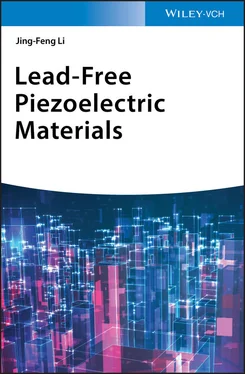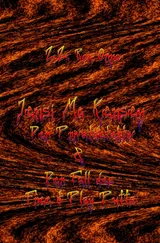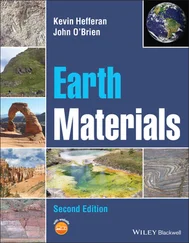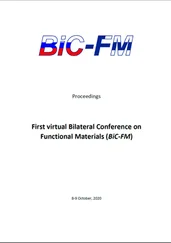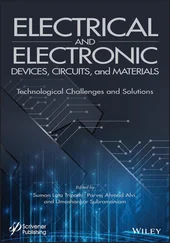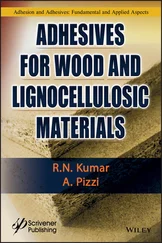Jing-Feng Li - Lead-Free Piezoelectric Materials
Здесь есть возможность читать онлайн «Jing-Feng Li - Lead-Free Piezoelectric Materials» — ознакомительный отрывок электронной книги совершенно бесплатно, а после прочтения отрывка купить полную версию. В некоторых случаях можно слушать аудио, скачать через торрент в формате fb2 и присутствует краткое содержание. Жанр: unrecognised, на английском языке. Описание произведения, (предисловие) а так же отзывы посетителей доступны на портале библиотеки ЛибКат.
- Название:Lead-Free Piezoelectric Materials
- Автор:
- Жанр:
- Год:неизвестен
- ISBN:нет данных
- Рейтинг книги:5 / 5. Голосов: 1
-
Избранное:Добавить в избранное
- Отзывы:
-
Ваша оценка:
- 100
- 1
- 2
- 3
- 4
- 5
Lead-Free Piezoelectric Materials: краткое содержание, описание и аннотация
Предлагаем к чтению аннотацию, описание, краткое содержание или предисловие (зависит от того, что написал сам автор книги «Lead-Free Piezoelectric Materials»). Если вы не нашли необходимую информацию о книге — напишите в комментариях, мы постараемся отыскать её.
Lead-Free Piezoelectric Materials
Lead-Free Piezoelectric Materials
Lead-Free Piezoelectric Materials — читать онлайн ознакомительный отрывок
Ниже представлен текст книги, разбитый по страницам. Система сохранения места последней прочитанной страницы, позволяет с удобством читать онлайн бесплатно книгу «Lead-Free Piezoelectric Materials», без необходимости каждый раз заново искать на чём Вы остановились. Поставьте закладку, и сможете в любой момент перейти на страницу, на которой закончили чтение.
Интервал:
Закладка:
181 175
182 176
183 177
184 178
185 179
186 180
187 181
188 182
189 183
190 184
191 185
192 186
193 187
194 188
195 189
196 190
197 191
198 192
199 193
200 194
201 195
202 196
203 197
204 198
205 199
206 200
207 201
208 202
209 203
210 204
211 205
212 206
213 207
214 208
215 209
216 210
217 211
218 212
219 213
220 214
221 215
222 216
223 217
224 218
225 219
226 220
227 221
228 222
229 223
230 224
Lead‐free Piezoelectric Materials
Jing‐Feng Li

Author
Jing‐Feng LiTsinghua University Materials Science and Engineering No. 30 Shuangqing Road Haidian District 100084 Beijing China
Cover Image:© Coffeemill/Shutterstock
All books published by Wiley‐VCHare carefully produced. Nevertheless, authors, editors, and publisher do not warrant the information contained in these books, including this book, to be free of errors. Readers are advised to keep in mind that statements, data, illustrations, procedural details or other items may inadvertently be inaccurate.
Library of Congress Card No.:applied for
British Library Cataloguing‐in‐Publication DataA catalogue record for this book is available from the British Library.
Bibliographic information published by the Deutsche NationalbibliothekThe Deutsche Nationalbibliothek lists this publication in the Deutsche Nationalbibliografie; detailed bibliographic data are available on the Internet at < http://dnb.d‐nb.de>.
© 2021 WILEY‐VCH GmbH, Boschstr. 12, 69469 Weinheim, Germany
All rights reserved (including those of translation into other languages). No part of this book may be reproduced in any form – by photoprinting, microfilm, or any other means – nor transmitted or translated into a machine language without written permission from the publishers. Registered names, trademarks, etc. used in this book, even when not specifically marked as such, are not to be considered unprotected by law.
Print ISBN:978‐3‐527‐34512‐0 ePDF ISBN:978‐3‐527‐81707‐8 ePub ISBN:978‐3‐527‐81705‐4 oBook ISBN:978‐3‐527‐81704‐7
About the Author
Jing‐Feng Liis Changjiang scholar distinguished professor of the School of Materials Science and Engineering at Tsinghua University, Beijing, China, and also serves as deputy director of Tsinghua University‐Toyota Research Center. Dr. Li has received master and doctor degrees in materials science and engineering both from Tohoku University (Japan) in 1988 and 1991 and a bachelor of engineering from Huazhong University of Science and Technology, China, in 1984. After temporarily working at Nihon Ceratec Co. Ltd., he was appointed to assistant professor in Tohoku University in 1992 and promoted to associate professor in 1997, then joined Tsinghua University as full professor in 2002. He also served as vice department chair (2005–2012) and vice school dean (2013–2016) of Materials of Materials Science and Engineering Department/School at Tsinghua University.
Dr. Li has conducted a wide range of research. His early work in Tohoku University focused on phase transition of zirconia ceramics, ceramic processing, and mechanical properties of silicon carbide and aluminum nitride ceramics, and ceramic microfabrication processing. From 2002 at Tsinghua, Li has been leading a research group with research interests on lead‐free ferroelectric ceramics for piezoelectric and energy storage applications, piezoelectric films for microelectromechanical system (MEMS) applications, thermoelectric materials, and microdevices for energy conversion, MEMS‐based microfabrication processing. He has published >490 papers (H‐index = 67) in prestigious journals and received several awards including distinguished young researcher award from the Japan Institute of Metals and the first‐class science and technology award from the Chinese Ceramic Society, distinguished young scholars fund from National Natural Science Foundation of China, Journal of the American Ceramic Society Loyalty Award.
He serves as Editor‐in‐Chief of Journal of Materiomics, associate Editor‐in‐Chief for Journal of the Chinese Ceramic Society, Reginal/Subject Editor for Journal of Materials Processing Technology (2005–2013), and editorial board member for NPG Asia Materials, Journal of Advanced Ceramics, Journal of Asian Ceramic Societies, Science China Technological Science, Energy Harvesting and Systems, Journal of Inorganic Materials, Electronic Components and Materials (Chinese), Powder Metallurgy Technology (Chinese). He has been elected to the President of Thermoelectric Materials and Applications Subsociety of Chinese Materials Research Society and Vice President of Micro/Nano Technology Subsociety of Chinese Ceramic Society in 2018. He is a fellow of the American Ceramic Society, board member of International Thermoelectric Society, full member of International Institute for the Science of Sintering, and ferroelectric committee member of IEEE Ultrasonics, Ferroelectrics, and Frequency Control Society.
Foreword by Professor Longtu Li
Piezoelectric materials possess the functionality of interconversion between electrical energy and mechanical energy, which have been widely used in electronic information, communication, automobile, military defense, aeronautics and space technology, medical diagnostics, energy storage and harvesting, artificial intelligence, and advanced manufacturing, among other applications. The market‐dominating piezoelectric ceramics are based on the Pb(Zr,Ti)O 3(abbreviated as PZT) system, which is a big family with diverse chemical modifications designed for specific applications. PZT‐based ceramics possess comprehensive excellent properties, but its environmental incompatibility has generated increasing concerns since the beginning of the twenty‐first century. In addition, the European Union's legislation about Restriction of the use of certain Hazardous Substances (RoHS) in electrical and electronic equipment has accelerated the research and development of high‐performance lead‐free piezoelectric ceramics.
Piezoelectric ceramics and device applications have been one of the key research directions in the State‐Key Laboratory of New Ceramics and Fine Processing, Tsinghua University. At Tsinghua University, our research groups mainly focused on lead‐based piezoelectric ceramics and their applications before the twenty‐first century. Since the new century I became deeply interested in lead‐free piezoelectrics and have been heavily involved in the related research activities with several research groups within our state‐key laboratory. Among them, Prof. Jing‐Feng Li is the leader of the biggest research group working on lead‐free piezoelectric ceramics since 2002 when he moved to Tsinghua University from Tohoku University. With the financial support from the National Natural Science Foundation and the Ministry of Science and Technology of China, Tsinghua University and Toyota Motor Corporation, Prof. Jing‐Feng Li has been focusing on the (K,Na)NbO 3lead‐free piezoelectric system and made substantial progress in numerous research areas, including sintering process, characterization and manipulation of hierarchical structure, chemical modification, and piezoelectricity enhancement mechanism, etc. Because of these impressive achievements, he has received the first‐class science and technology award from the Chinese Ceramic Society. Meanwhile, a start‐up company was also founded by his former students quite recently to promote the mass production and industrial applications of the high‐performance (K,Na)NbO 3‐based piezoceramics.
Читать дальшеИнтервал:
Закладка:
Похожие книги на «Lead-Free Piezoelectric Materials»
Представляем Вашему вниманию похожие книги на «Lead-Free Piezoelectric Materials» списком для выбора. Мы отобрали схожую по названию и смыслу литературу в надежде предоставить читателям больше вариантов отыскать новые, интересные, ещё непрочитанные произведения.
Обсуждение, отзывы о книге «Lead-Free Piezoelectric Materials» и просто собственные мнения читателей. Оставьте ваши комментарии, напишите, что Вы думаете о произведении, его смысле или главных героях. Укажите что конкретно понравилось, а что нет, и почему Вы так считаете.
